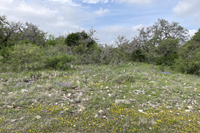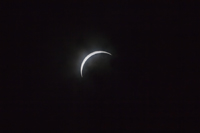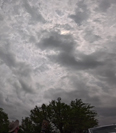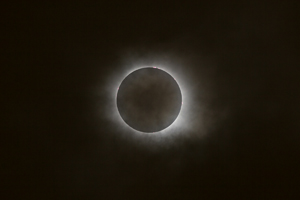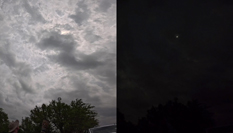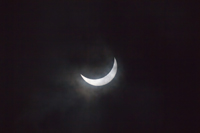|
Total
Solar Eclipse 2024 April 8
The
second "Great American Eclipse" in seven years was eagerly awaited for
by virtue of its above-average duration of 4m 28s at the
point of greatest eclipse in the Durango State of Mexico. First landfall of the moon's umbral
shadow occurred on the coast of Mexico near Mazatlan, before sweeping through
the Mexican highlands and into south-western Texas where it passed over the
populated centres of San Antonio (NW), Austin and Dallas-Fort Worth. Other
populated centres included Little Rock, Indianapolis, Cleveland, Niagara Falls
and Buffalo. It then passed over the Canadian communities of Hamilton, then just south of
Toronto and over southern Montreal, before leaving land near Bonavista,
Newfoundland. More details of the path of totality through Mexico, USA and Canada
can be found here.
Historical
cloud data suggested the most
favourable viewing areas to be Mexico and Texas (with 40-50% cloud probability in
early April), a measure that steadily deteriorated (to 70-80%) north-eastwards
along the path
through the US and into Canada.
I decided to
be based in San Antonio to join a small eclipse-birding group to explore birding
locations around San Antonio during the weekend culminating on eclipse day
(Monday) at a site just off the centre line in the Kerr Wildlife Management Area,
near Hunt, Texas, where totality commenced at 13:31h (local time) with
duration of 4m 22s. Following birding in the morning, we
prepared for the eclipse from around 11am. Fears that observing sites would be
in huge demand were completely allayed as we had the area almost completely to
ourselves. Unfortunately, forecasts of complete cloud cover during the afternoon
(which likely had deterred visitors to the area) proved to be correct as we
watched large patches of hazy blue sky replaced by heavy cloud cover as morning
made way for afternoon.
Small patches
of clear sky allowed first contact to be observed on schedule, but only very
brief snatches of the partial phases were available during the one hour and
twenty minutes leading up the second contact. However, a thin crescent Sun made
a relatively long appearance which enabled some sharp/fuzzy shadow experiments
to be conducted in the fading light. It was only then that we noticed the
coolness of the air and the quietness all around us. Inevitably, the clouds
closed in again and a short while later the rapidly fading light was our only
indication that second contact had occurred. Day had turned (almost) to night.
Thirty seconds later totality appeared all too briefly through a tiny window in
the low level clouds before the beauty was obscured again. Then Venus, to the
lower right of the sun/moon, shone brightly and briefly though a cloud gap.
Apart from a few even briefer partial views of totality, that was the end of the
show for us as the event played out above the thick clouds for the final three
and a half minutes. Then daylight returned for keeps for the rest of the
day.
Examination
of video footage after the event revealed that the darkness was intensified
during the minutes around mid-totality, most likely because the brilliant inner
corona had been more fully covered by the moon during this time - compare the
bright totality witnessed during the eclipse of 2023
April 20.
We then headed back towards San Antonio on minor roads and then onto the I-10,
which was packed with vehicles - many people had travelled to the
Kerrville area for the eclipse! The normal half hour trip took two hours
to complete; the slow pace allowing ample time to enjoy the colourful
wildflowers decorating the highway verges. Despite the inclement
weather, it was memorable and enjoyable
experience.
Observers to the east of us in Texas fared better, as gaps in the
cloud cover appeared just before totality allowing excellent views of
the spectacle. Furthermore, the success continued further eastwards
along the track, even into Canada. I am delighted that many, many
millions of people on that day saw one of Nature's grandest events under
favourable skies.
|
